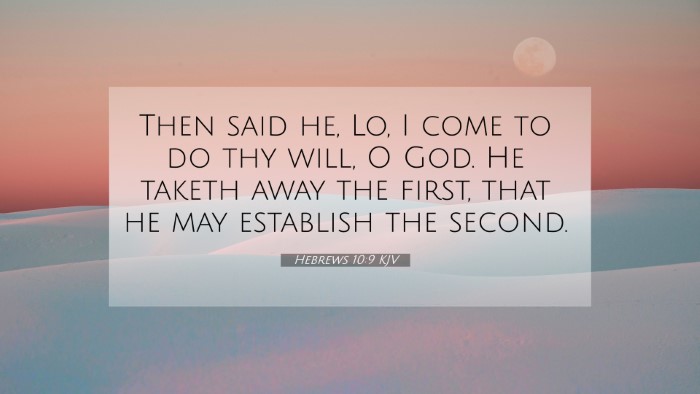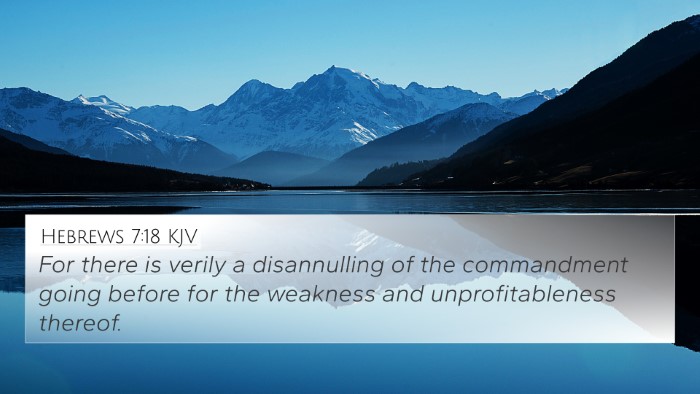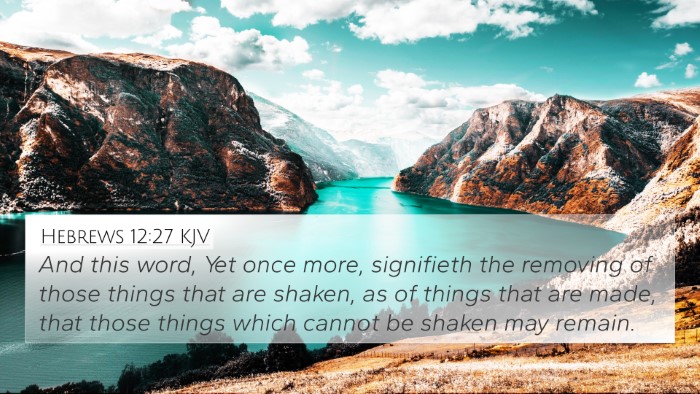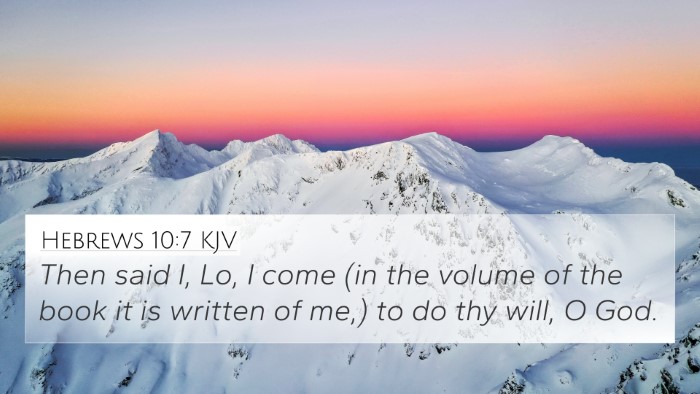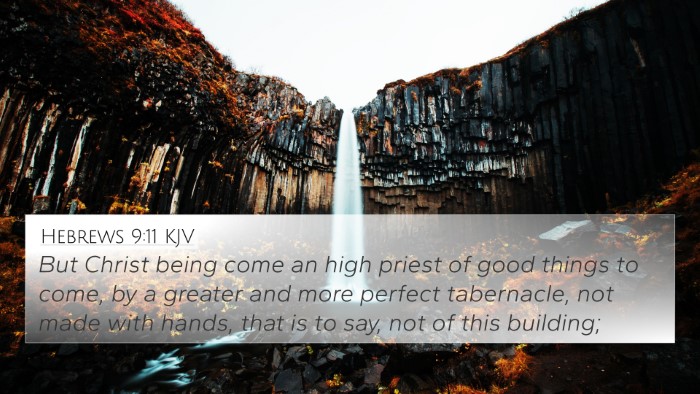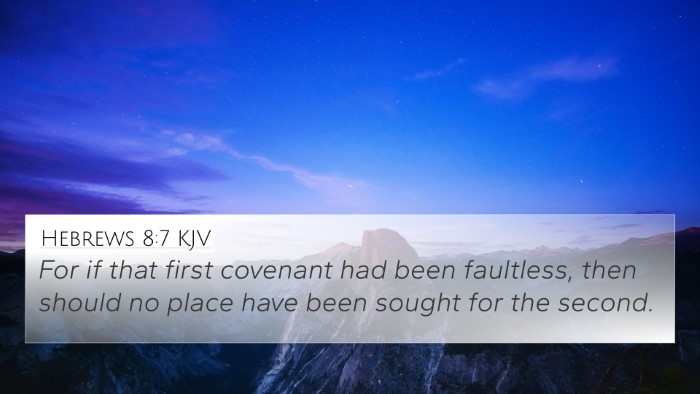Hebrews 10:9 - Verse Meaning and Interpretation
Hebrews 10:9 states, "Then said He, Lo, I come to do thy will, O God. He taketh away the first, that he may establish the second.". This verse encapsulates the essence of Christ's mission in fulfilling God's divine plan by contrasting the old covenant with the new one established through His sacrifice.
Understanding the Context
The Book of Hebrews is rich in theological significance, aiming to illustrate the superiority of Christ over the old covenant. The author addresses Jewish Christians who were tempted to revert to Judaism, emphasizing that Christ’s sacrifice supersedes the sacrificial system of the Old Testament.
Commentary Insights
-
Matthew Henry:
Henry notes that this verse highlights the necessity of Christ’s obedience to God's will, demonstrating that His coming was pivotal to redeem humanity. The "first" refers to the old sacrificial system, which was inadequate for true redemption, while the "second" signifies the new covenant established through Jesus.
-
Albert Barnes:
Barnes emphasizes that Christ's declaration of His purpose establishes the New Testament's foundation, reflecting a shift from the law's demands to grace. This verse underscores the commitment of Christ to the divine will, signifying that through His sacrifice, the first covenant is rendered obsolete.
-
Adam Clarke:
Clarke elaborates on the interpretation of "doing God's will," suggesting that it encompasses not only His sacrificial death but also His entire earthly ministry. Clarke posits that this obedience is the essence of the new covenant, which guarantees eternal salvation for believers.
Thematic Connections
Hebrews 10:9 creates thematic connections with several key Biblical concepts and other verses. It illustrates the transition from law to grace, showcasing a pivotal moment in salvation history. Here are some important cross-references:
- John 10:17-18: Jesus speaks of laying down His life voluntarily as an act of obedience to God.
- Matthew 5:17: Jesus fulfills the law rather than abolishes it, echoing the transition mentioned in Hebrews.
- Romans 8:3: Addresses the inability of the law to save, mirroring the need for a new covenant.
- Galatians 3:24: The law served as a tutor to bring us to Christ, emphasizing the necessity of the new covenant.
- 1 Peter 1:18-19: Discusses Christ's sacrificial role as the Lamb without blemish, linking to Hebrews' theme of sacrifice.
- Hebrews 9:11-12: Reiterates the difference between Christ's once-and-for-all sacrifice and the repeated animal sacrifices.
- Hebrews 7:22: Jesus as the guarantor of a better covenant, affirming the themes in Hebrews 10:9.
- Isaiah 53:5: Prophecy indicating the suffering servant aligns with the sacrificial nature of Christ's mission.
- Jeremiah 31:31-34: The promise of a new covenant, establishing the prophetic background of Hebrews 10:9.
- Luke 22:20: Jesus establishes the new covenant in His blood during the Last Supper, directly tying back to our verse.
Practical Application
Understanding Hebrews 10:9 encourages believers to grasp the significance of Christ's sacrifice. It calls for a reflection on obedience to God’s will in our own lives, inspiring followers of Christ to pursue a faith that mirrors His commitment to righteousness and grace.
Cross-Referencing Tools
To deeper engage with the themes present in Hebrews 10:9, consider utilizing various cross-referencing tools. These include:
- Bible concordances to find related verses.
- Bible cross-reference guides available in study Bibles.
- Online platforms that provide comprehensive Bible reference materials.
- Chain reference Bibles that help in tracking themes across scripture.
- Pursuing a structured cross-reference Bible study method to enhance understanding.
Conclusion
Hebrews 10:9 offers profound insights into the narrative of redemption found throughout scripture. By drawing connections between various Bible verses and employing effective cross-referencing studies, believers can enrich their understanding and appreciation of God's intricate plan through Christ. This kind of scholarly exploration fosters spiritual growth and theological depth, revealing the interconnectedness of biblical truths.


